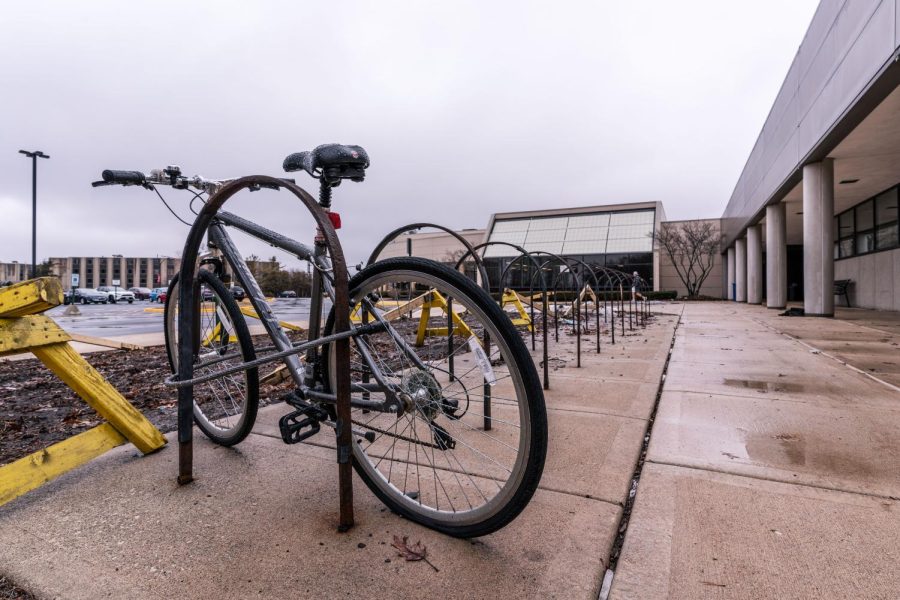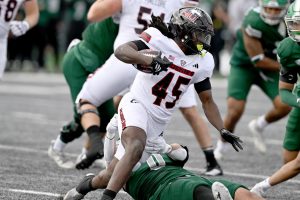Bike lanes are a vital part of society
Bicycles line up at a rack outside the NIU Rec Center.
March 20, 2022
As a driver, I sometimes fear taking to the roads in the springtime. It’s not because of the unfortunate need to drive in the rain or dodging the potholes caused by the winter snow. It’s because of cyclists.
As the sun finally peeks out from behind the clouds and the weather warms up, more people want to be outside.
The typical cycling season also begins in the spring, meaning more vehicles have to share the road, according to Training Peaks cycling blog
With cars, cyclists and pedestrians trying to share the road, designated bike lanes are necessary for safety.
“Bike lanes enable bicyclists to ride at their preferred speed without interference from prevailing traffic conditions,” according to the National Association of City Transportation Officials.
However, not all cities are created equally. Some cyclists have much better access to bike lanes than others.
Over 1,000 cyclists were killed in accidents in 2015. Nearly 500,000 cyclists were injured, According to a report released by the Center for Disease Control and Prevention.
Evidently, the lack of bike lanes in some cities poses an obvious threat, and cyclists get every year because of it.
In many cases, drivers simply don’t see cyclists. That doesn’t mean they aren’t there.
One of the things we’ve found with bike infrastructure is that it makes streets safer for everyone, not just bicyclists,” said Barbara McCann, director of Safety, Energy & Environment for the U.S. Department of Transportation (USDOT) in an AARP article.
By providing clearly marked, easily accessible bike lanes, city planners allow the roads and the sidewalks to be a safer place for drivers, cyclists and pedestrians.
Safer roads also mean safer sidewalks. Fast-moving bikes can be dangerous for pedestrians, as cyclists can often be unpredictable.
Bikers are allowed to ride on the sidewalk as long as pedestrians are given the right of way, according to Illinois state law. However, according to the bikelaw.com blog, individual municipalities have sidewalk bike riding for riders aged 12 and up.
This poses a unique challenge to bike riders who can’t ride on the sidewalk or in the street: Where are they supposed to ride?
By creating roads with designated bike lanes, there’s a built-in place for cyclists to ride. With clearly marked lanes, motorists will be able to predict the movements of a cyclist if they’re following the rules of the road.
Pedestrians and cyclists also won’t have to compete for space on the sidewalk, and crashes between the two shouldn’t happen as frequently.
Cities should prioritize creating bike lanes; they’re not only necessary for the safety of citizens, but they also contribute to less road congestion and more livable communities.
As cyclists start hitting the pavement again, I’d rather know where they’re going to be, both as a driver and a pedestrian. That way, driving near bikers will be less anxiety-inducing, and taking a walk around the block won’t put me in danger of being hit.
Cyclists are going to continue to ride on the road. It should be a safe space for them to do so.







